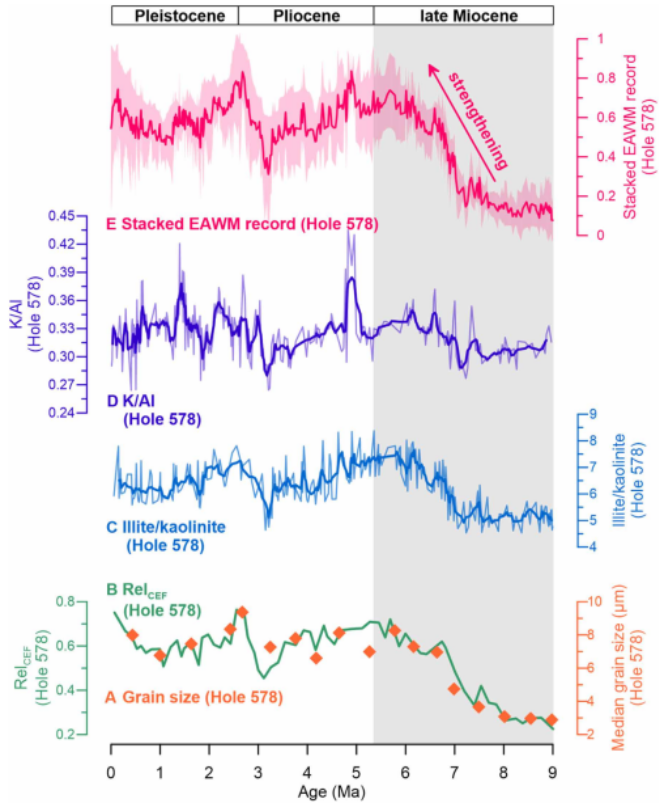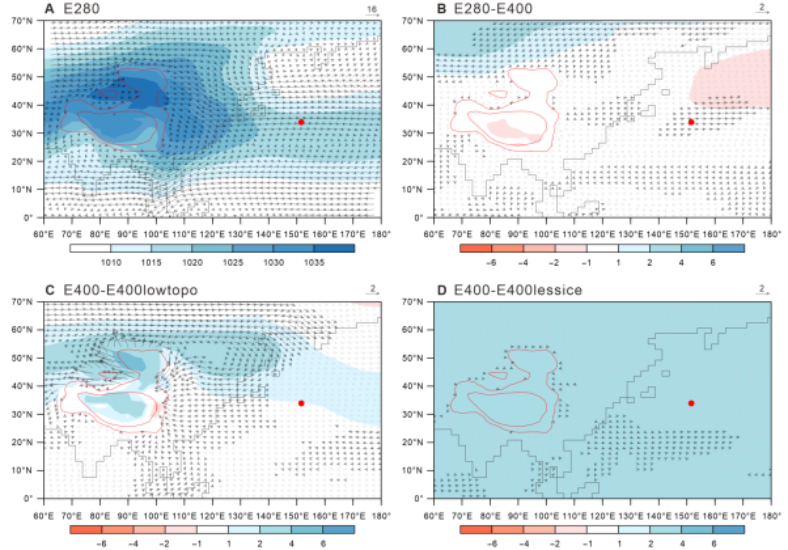The East Asian winter monsoon (EAWM) significantly impacts environmental change around East Asia and the western Pacific Ocean. Investigating paleo-EAWM characteristics and their driving mechanisms is crucial for understanding the drivers of major meteorological events linked to EAWM anomalies.
During the late Miocene, global climate cooling marked a series of plateau uplifts, providing a key window to explore the relationships between EAWM variations, global changes, and tectonic activities.
To elucidate late Miocene EAWM variations and their driving mechanisms, Dr. Qiang Zhang from the Institute of Geology and Geophysics, Chinese Academy of Sciences, collaborated with domestic and international researchers to conduct an integrated study of sedimentary records and paleoclimate simulations.
The researchers utilized abyssal sediment from the Northwest Pacific Ocean Deep Sea Drilling Program (DSDP) Hole 578 to construct a precise and stacked EAWM record since 9.0 million years ago (Ma), assessing EAWM variations from the perspectives of wind intensity and dust source region weathering degree (Fig. 1). This new record indicates that the EAWM strengthened during the late Miocene, complementing EAWM reconstructions from the Chinese Loess Plateau and East Asian marginal seas. Paleoclimate simulations were used to evaluate the effects of atmospheric CO2 decline, the central Asian orogenic belt, northeast Tibetan Plateau uplift, and Antarctic ice-sheet expansion on late Miocene EAWM strengthening. The results show that atmospheric CO2 decline played a vital role in EAWM intensification over the Northwest Pacific Ocean compared to other factors (Fig. 2).
This study expands understanding of late Miocene EAWM evolution from inland areas to the open ocean and highlights the importance of atmospheric CO2 variations on past EAWM variability over large spatial scales.
The study was conducted in cooperation with the Institute of Atmospheric Physics, Chinese Academy of Sciences; University College London, UK; Australian National University; Istituto Nazionale di Geofisica e Vulcanologia, Italy; Laoshan Laboratory, China; First Institute of Oceanography, Ministry of Natural Resources, China; Ocean University of China; Chinese Academy of Meteorological Sciences; Xinjiang Institute of Ecology and Geography, Chinese Academy of Sciences; and Southern University of Science and Technology, China.
The work was supported by the National Natural Science Foundation of China, the Australian Research Council, the Strategic Priority Research Program of the Chinese Academy of Sciences, the Science and Technology Major Project of the Xinjiang Uygur Autonomous Region of China, the Fellowship of China National Postdoctoral Program for Innovative Talents, the Fellowship of China Postdoctoral Science Foundation, and the Deep Sea Drilling Program.

Fig.1: Eolian related parameters and an EAWM stack for DSDP Hole 578.

Fig. 2: Paleoclimate simulation results.
Contact:
Qiang Zhang
Institute of Geology and Geophysics, Chinese Academy of Sciences, Beijing, China
E-mail: zhangqiang@mail.iggcas.ac.cn